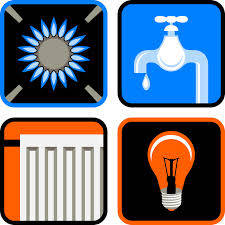 The east coast has been hammered this season with a deluge of winter storms – loads of snow, ice, and generally frigid conditions. In addition, these storms can bring hurricane force winds and spawn thunderstorms, lightning, and even tornadoes. When the weather gets rough, the ability to precisely forecast it, track it, and assess the impact on essential services – like utilities – in real-time is critically important.
The east coast has been hammered this season with a deluge of winter storms – loads of snow, ice, and generally frigid conditions. In addition, these storms can bring hurricane force winds and spawn thunderstorms, lightning, and even tornadoes. When the weather gets rough, the ability to precisely forecast it, track it, and assess the impact on essential services – like utilities – in real-time is critically important.
 The east coast has been hammered this season with a deluge of winter storms – loads of snow, ice, and generally frigid conditions. In addition, these storms can bring hurricane force winds and spawn thunderstorms, lightning, and even tornadoes. When the weather gets rough, the ability to precisely forecast it, track it, and assess the impact on essential services – like utilities – in real-time is critically important.
The east coast has been hammered this season with a deluge of winter storms – loads of snow, ice, and generally frigid conditions. In addition, these storms can bring hurricane force winds and spawn thunderstorms, lightning, and even tornadoes. When the weather gets rough, the ability to precisely forecast it, track it, and assess the impact on essential services – like utilities – in real-time is critically important.
For a utilities company, a winter storm-related outage can create significant hardship for its customers. In severe weather conditions nothing is more important than heat – it can mean the difference between life and death. How can utilities providers leverage streaming weather data to detect and remedy problems with transmission lines, power stations and transformers before there’s an outage?
It starts with analyzing up-to-the-minute weather predictions to correlate the likely path of rapidly moving severe weather corridors and the location of critical facilities and then being able to send real-time alerts to service crews using geospatial intelligence. Using a streaming data analytics solution like Vitria OI, a utilities provider can continuously monitor severe weather events- such as squall lines and lightning strikes – and correlate them with the location of critical facilities. Then, based on this real-time analysis, utilities providers can estimate the magnitude of damage based on the frequency, intensity, and precise location of these events. And, by tracking the movement of severe weather patterns, providers can predict which facilities will be hit next and the likely impact on service. When predetermined thresholds that signal a potential outage are met or exceeded, the solution can automatically trigger alerts to crews closest to the affected facilities to perform repair or preventative service. Customers are kept apprised of the situation, the potential impact, and progress – all in real-time.
How does this play out in the real world?
It’s 9:00 AM and the stream processing engine within Vitria OI has identified a potential issue with a substation that will affect a specific set of customers by correlating real-time weather data with status data coming off the grid and customer data from internal enterprise systems. By correlating the location of the substation with that of the closest repair crew, the operations team can automatically notify the crew via their mobile devices to head to the scene of the actual or predicted problem. At the same time, customer care is alerted about the potential outage details. By as early as 9:02 AM, these customers are notified of the potential issue, the likely impact and the repair time commitment. And when the field teams resolve the issue at 10:32, workforce management, operations and customer care also automatically receive notification of resolution. The call center is updated by 10:34, and by 10:35 customers receive notifications that the problem is resolved.
When there’s a widespread utilities outage during a bout of severe weather, every second counts. Streaming analytics provides ongoing analysis and alerts – down to the second of occurrence – so that utilities companies can predict, detect and remedy problems with the grid rapidly. And, in some cases, providers are able to predict and mitigate problems before there’s an outage. If an outage does occur, real-time analytics empowers utilities companies to keep both their functional units in sync and their customers in the loop around the repair cycle in real-time.







